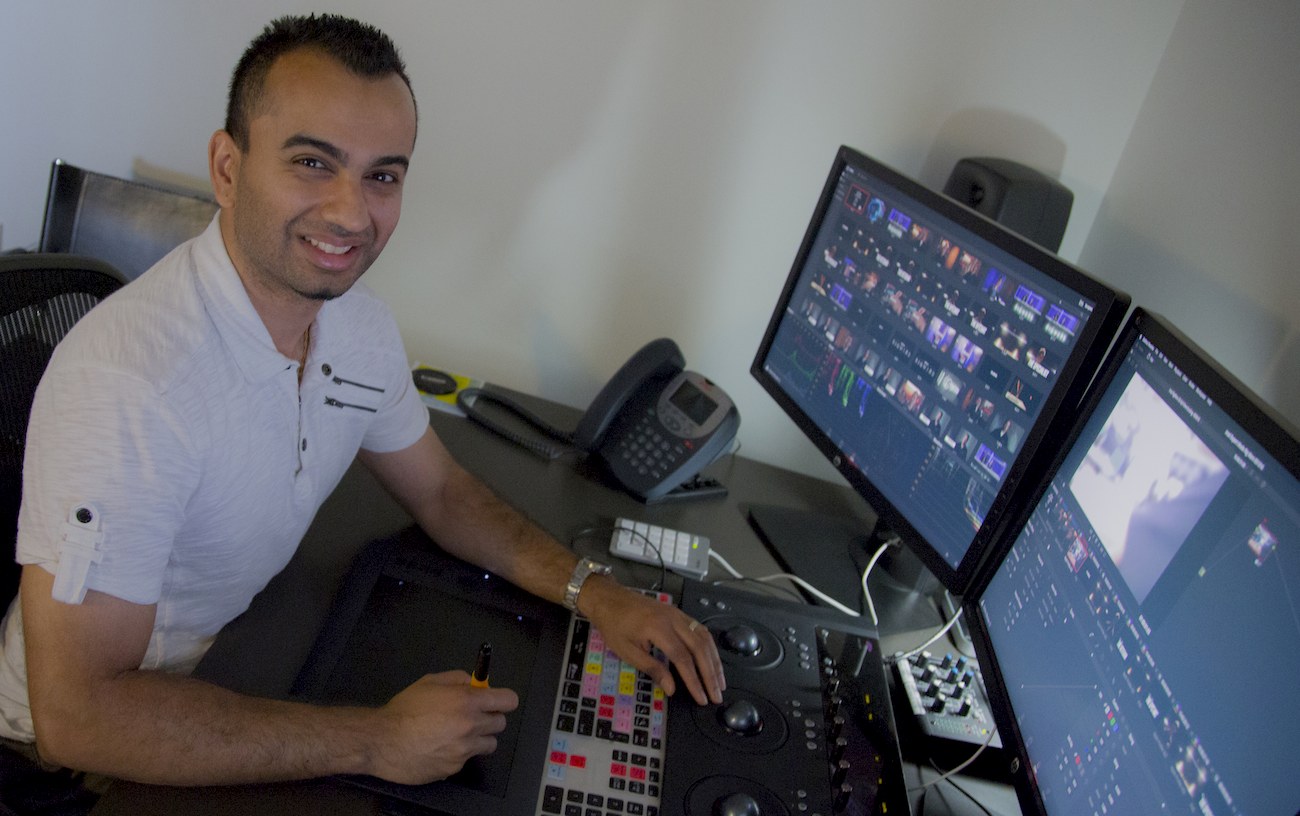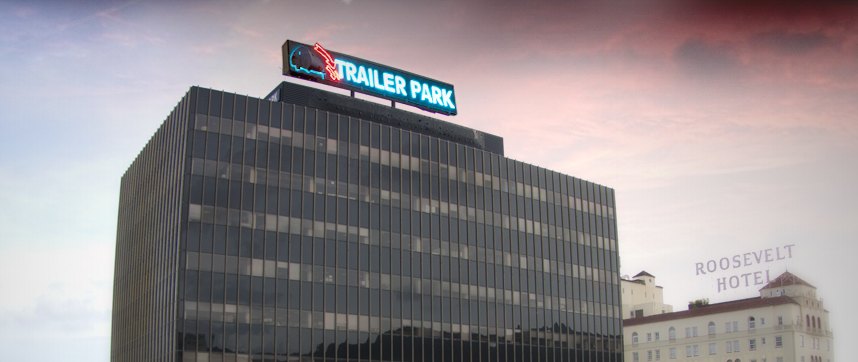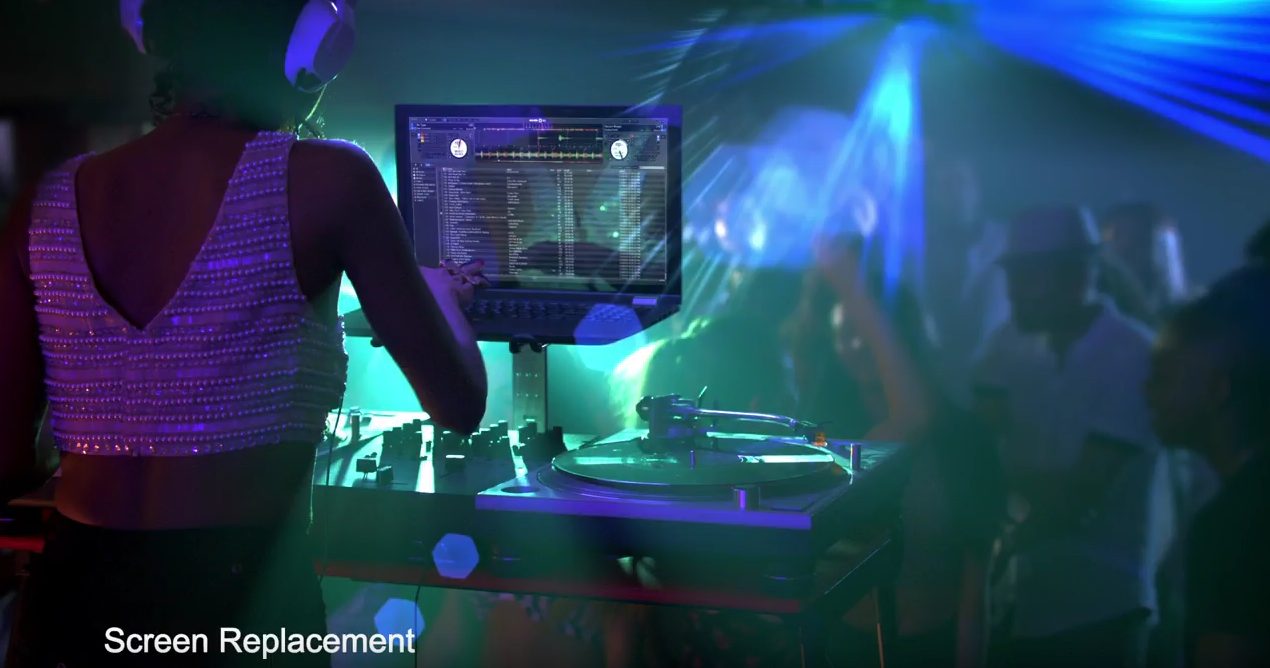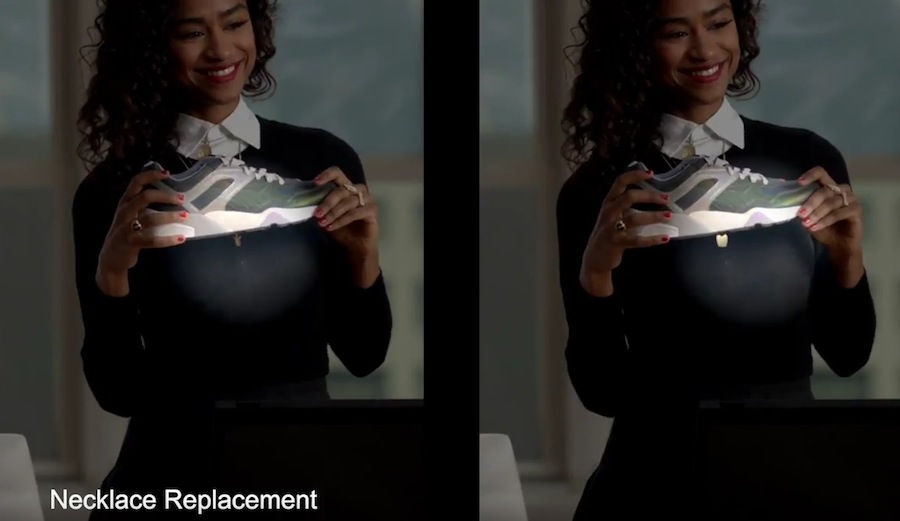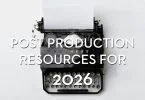What Does an Online Editor Do?
If you’ve ever wondered what an online, or finishing, editor does these days then you’re in luck! In this post you can get an incredibly detailed look at what an online editor does every day, the creative and technical problems they have to solve, the tools they use and the variety of work they polish to perfection.
I interviewed VK Shah, a Senior Online Editor and Colorist at Trailer Park in Hollywood, on what it takes to push projects complex projects over the finishing line. I’d like to thank him for taking the time to provide such comprehensive and wisdom saturated answers!
What I love about being an online editor at Trailer Park is that I get to work with talented people on numerous projects. I love seeing our projects on air, in theaters, and on the Internet. I take pride in knowing that my work resulted in the viewer getting the best experience possible from the spot.
Before we dive into VK’s interview the best way to get a good sense of what the online editor’s job involves is to check out VK’s recent reel, in which he breaks down a couple of key shots, revealing the clean up, rotoscoping, compositing and colour grading work involved in finishing the shot.
There’s a lot of skills at play in making a shot look as good as it possible can!
Update – 2021
Finishing is a good term these days. Finishing in Resolve is my preferred method, I can grade and online and deliver from there.
— Jamie Dickinson (@dickij10) January 23, 2021
Interview with VK Shah – Online Editor
In today’s post production landscape where a lot of people aren’t following a traditional offline/online workflow, how does the role of an online editor fit in?
In the traditional finishing workflow, an online editor takes the edit from the offline editor and conforms the full resolution footage to the offline cut. This worked well when film was cut on workprints, or during the early days of digital editing when storage space was expensive.
Nowadays, many non-studio shows don’t need footage re-conformed to higher resolution footage, so the role of the online editor has changed. Many online editors have attached extra skills to online – color correction, graphic design, visual effects – and I believe that’s the way the position will lean toward in the future.
For studio films and most network shows, the online editor will still have a traditional role of re-conforming, but for others, it’s essential to pick up additional skills.
Today’s online sessions having many challenges, mostly with multiple codecs, frame rates, aspect ratios, and shows with multiple formats that require lots of converting and checking to make sure that the best quality is used in the final show. Cameras and codecs evolve faster than computers, so I am always looking for the best options to work with the footage.
What does an online editor do on a typical project at Trailer Park?
Thankfully, we don’t have many typical days at Trailer Park in finishing! I work in the Finishing Department along with 3 other online editors, 4 sound mixers, and 4 supervisors. We finish content for any department in the company. In one day, I can work on a 30 second television promo, a 10 minute behind the scenes featurette, and a brand spot.
Our day starts with the supervisors assigning us projects. Once the project is ready, the Assistant Editors in that department prepare it for us. This includes making a QuickTime reference video, audio AAF/OMF, media managing the project, and preparing the project file.
Different departments can work on different software – Final Cut Pro 7, Avid Media Composer, and Adobe Premiere – so I have to be prepared to handle media and projects from any software. This is accomplished by using an XML.
Once the project is prepped, I start my work. The first step is to figure out what software I will use to finish. For any project that requires lots of fx work and color correction, I import the project in Autodesk Flame Assist.
For a show that is color grading heavy, I import that project into Resolve. For any project that requires little to no color correction, but rather a “traditional” online with mostly re-conforming, I can choose to keep the project in its original software.
Everyone online editor will have their own method and my process varies depending on the type of project. The main items in the workflow are:
- checking the Quicktime reference against the cut twice
- flagging any issues for the producer
- vfx work – blurs, green screens, etc. (if needed)
- color grading (I start with the most difficult shot first or the main interview)
- updating all of the graphics (which our supervisors are always on top of)
- checking every shot to make sure we have the best version available
- checking for any flash frames or effect errors, and multiple watch downs.
Once I’m comfortable with my work, I watch it down again with our supervisors for any internal notes. Then we bring in the producers for an approval session (more on that later). Once the picture and audio have been approved, I export a file for delivery. This file first goes to the supervisor for internal quality control. If there are issues, I go back and fix them.
After the project is delivered, I make sure the entire project is organized, and I save any effects or stills for future use. It’s important that the project is organized and every sequence is labeled. You may need to open this project months later and you won’t be able to remember the final delivered version. I keep my master sequence in a dated folder/bin with my initials at the end.
I also have custom columns so I can add notes. This could be an ID code or even a short description. What takes me a few minutes to organize now, would take someone else (or me) hours to figure out later. The eventual goal is to archive the project on LTO.
Get a bit more of a feel for all that Trailer Park does in this short ‘culture’ film from their careers page.
What do most people not understand about being an online editor?
The result from my work has to be right every time.
There are times when I’m waiting for preps, changes, or new graphics, but once they come in, I have to get the project finished quickly. I may have a deadline within an hour, so the spot has to be finished without excuses.
My job is not creative (unless we’re doing color grading or vfx), but I have creative ways to get it done. I also have to keep up with a lot of technology and updates. There’s always a new camera or format that a producer used and now I need to make sure I utilise it during the finish.
Also, I can work very long hours. If we’re waiting for some VFX shots or approved graphics, my shift can go late into the night.
Truthfully, anyone can learn the technical components of any software or hardware. What keeps me successful is thinking of the bigger picture.
The online editor is the last person who can make a change on the project before distribution. While the rest of the crew on the project have seen the cut countless times, the online editor is seeing it with a fresh set of eyes. The online editor has a responsibility to think from the audience perspective and to pay attention to what stands out or what could distract the viewer.
This takes experience and professionalism to build a trust with producers to communicate last minute adjustments to their project.
What are some of the software packages that you use, and why?
Autodesk Flame Assist – Flame Assist does everything, from color, to conform, to vfx, Flame Assist does it all. It is more expensive than other programs, and learning the program takes time, but I know I can finish any project in Flame Assist.
It handles mixed footage well, speed ramps, and all of your final touch ups. If you are doing mostly color correction, then I don’t find Flame Assist to be the fastest or the most intuitive program for that. That’s when I use Resolve.
Davinci Resolve – Resolve is the go to for color correction for me. It’s fast, organized, and it has every tool possible to do color. I love flagging clips to organize them in the mini timeline, grouping clips, using the tracker, and all of the various color tools.
I know Blackmagic added hundreds of new features for their latest version, so I fully believe in Blackmagic’s desire to continuously develop the program. You can’t do any real FX work in Resolve, but that is fixed by its integration with Fusion.
I would also love to see more open fx with Resolve as well and split-audio exporting, but I’m sure that will develop in the future. I have the Studio version for $1000, but the free version works well for many people.
Blackmagic (Eyeon) Fusion – I’ve recently started learning Fusion (after seeing the demo at the Los Angeles Post Production Group) and I see it as a great tool for people like me. For advanced Nuke, Maya, or Flame users, Fusion might be to small of a tool, but for what I do, Fusion seems very intuitive. I like the fact that it is integrating with Resolve. It’s pricing matches the Resolve model as well.
Adobe Premiere Pro – Premiere is really developing as a reliable post production package. Premiere Pro is what Final Cut Pro 8 should have been. With Premiere’s integration with Speedgrade, Media Encoder, and After Effects, you do have an all in one finishing tool.
Premiere does a great job with handling 4K and higher media and it’s an easy transition from Final Cut Pro. For me, Speed Grade isn’t as useful as Resolve or Flame Assist, but I would still feel comfortable using the Adobe package for many finishes.
Avid Symphony– Avid is still the broadcast standard and while Avid isn’t very innovative, it works. For Finishing, Avid is very well organized and the Symphony color option work well, especially with the Artist Color panel.
Avid has its uses for longer projects, but I would rather import the AAF into Resolve or Flame Assist for finishing. There are great benefits of having the media ingested in Avid’s MXF format, but for a quick turnaround, the media ingesting slows down the process.
If the spot is started in Avid and has a lot of effects or graphics, I have to figure out whether it’s worth it to finish in another program and rebuild graphics and effects, or stay within Avid. This is why it’s helpful to know every program’s strengths and weaknesses.
Final Cut Pro 7 – FCP7 still works, and with enough plugins, you can finish many projects in FCP7. By round-tripping with Resolve, this workflow will still be useful in many post houses.
FCP7 can be very fast and finish less intensive projects, but at this point, I would rather import the project into Premiere or Resolve and use their more developed tools. I still finish in FCP7 in projects that require a basic conform and basic color correction. Up until a few years ago, our finishing department used FCP7 as a finishing tool for all projects.
What resources you look to learn so many different software packages?
I do the majority of my training with online companies. Lynda.com (which my company offers free to employees) does a great job with beginner and some intermediate level training.
For a comprehensive training, I’ve always been happy with Resolve tutorials on RippleTraining.com, they are always up to date.
For more advanced training on Flame Assist or Fusion, I use CMIVFX or FXPHD. The forums at LiftGammaGain.com and Autodesk both provide a lot of valuable information.
In person, I do utilize the Los Angeles Post Production Group in Santa Monica; their meetings are great ways to learn and explore new aspects of post production while meeting people who actually work in post.
Even when I know a program extensively, I keep up with blogs and industry news to see any quick tips, or even search on Google for hacks on the program.
I encourage people to push every button and look their every menu to learn what each function does, whether or not you use it.
When I get into a new program, I always customize the keyboard to my preferred settings. It’s a combination of Avid and FCP7 and even though my shortcuts don’t make much sense to my co-workers, it makes me feel comfortable in any application!
How do approval sessions work?
During the approval session, my supervisor and the show’s producing team will be in my room. The producing team can just be the producer, but can also be the editor, a coordinator, a PA, and the client producer. With brand spots, the creative directors, copywriter, and account manager can also be in the room.
To keep the attention on the client monitor, I turn off any monitor or light that isn’t needed for the approval session. If the software application has a separate timecode display (Avid, FCP7, and Premiere have it), I will make that as large as possible on the computer monitor. At Trailer Park, we try to do the final approvals in the picture room. The audio mixer will give me a mixed stereo audio track for playback.
Most sessions start with doing a first pass watch down of the show followed by everyone giving notes. I address the notes, and then we watch back those sections first.
I may even have my own set of notes to just double check sections. Then we do a final watch down. Once we are satisfied, the producer will listen to the audio in the audio mixing suites.
If the notes are extensive, the producers will leave and come back later to review the changes. Part of being an online editor is to be able to fix problems quickly.
Also during this process, I will let the producer know of any editorial changes that I’ve made. This could be re-positioning a shot, adjusting a speed ramp, or changing a transition or effect. I will also bring up shots that I believe are low in quality or shots that could be fixed in offline. I do these by adding markers to the sequence.
It’s always best to speak up about any issue you may think of now, rather than trying to cover your tracks later.
Approvals can be stressful depending on who’s in the room, or when the deadline is (ASAP!!!), or just by the scope of the project. It’s important to remain calm and be professional.
The producer could be under stress from their boss, who could be getting notes from multiple people. Keep in mind that the producers have been working on this project for a long time, so the finishing process can seem overwhelming or frustrating to them.
It also helps when you have a strong supervisor in the room (like our Finishing supervisors) to help manage the room.
The end goal is to address each note, make sure the producer is satisfied with their project, and deliver the right product. This is why it’s important to watch the cut against the reference, ask questions early, and make sure you’ve read every note for the project. Online sessions tend to be quick and online editors need to know the details of the project.
How is versioning management for multiple spots and deliverables handled?
We have a very strong post supervising team who keep track of all of the deliverables.
Once the producer approves the spot, we export a QuickTime file for our supervisors to do a quality control pass. Once that’s approved, we start making the versions. This can include changing the end card for a new date (Next Week, Tomorrow, Next…), making files with multiple audio passes, and making a textless master.
The key is to keep the project organized because the spot can get changed the next day and you are expected to know where every version is. I never delete a version, I always keep each version dated, even timed, into unique bins/folders so I can keep track of changes. In the Notes column, I usually write down what changed (new audio, new graphic, etc).
How can you become an online editor and survive in the industry?
To be an online editor, it’s easiest if you come from an assistant editor background. There’s so much technical knowledge that you need and AE’s tend to be on the track for that.
Post Supervisors can also transfer into the field since they see the bigger picture, but you need technical knowledge. Learning technical details and getting faster can happen on the job, but you have to want to keep learning.
To be a Colorist, learn about the art of color, skin tones, and balance within a scene. Learning this will be especially helpful when you have to color match to previously colored shots.
Most coloring tools have the same basic principles, so it’s necessary to understand the bigger picture of coloring, rather than the technical components. Anyone can make one shot look good, but to carry that look across a scene and the entire spot requires close attention.
Technology is getting cheaper and software is getting easier to use, so if you want to stay an online editor, you have to keep up with software and updates. I often meet online editors who only work in Avid and that’s unfortunate since an online editor is not someone who masters one piece of software, but rather someone who can use all the software available to achieve the best results.
Since working with producers is a large part of the job, learn what they want and what you can do to make the finishing smooth. Predict what they need by reviewing the deliverables and informing them of any issues along the way.
My job isn’t to be a button pusher; rather it’s to see the bigger picture of what will look right for the project when it’s broadcast.
The producer doesn’t want to hear about the technical terms of the process; they want to be sure that their project is 100% ready for broadcast.
Even though most people will never see the work I do on a project, I take pride in knowing that I got the project across the finish line and made everyone’s hard work look good.
Check out Trailer Park’s work here and connect with VK over on Linked In.

